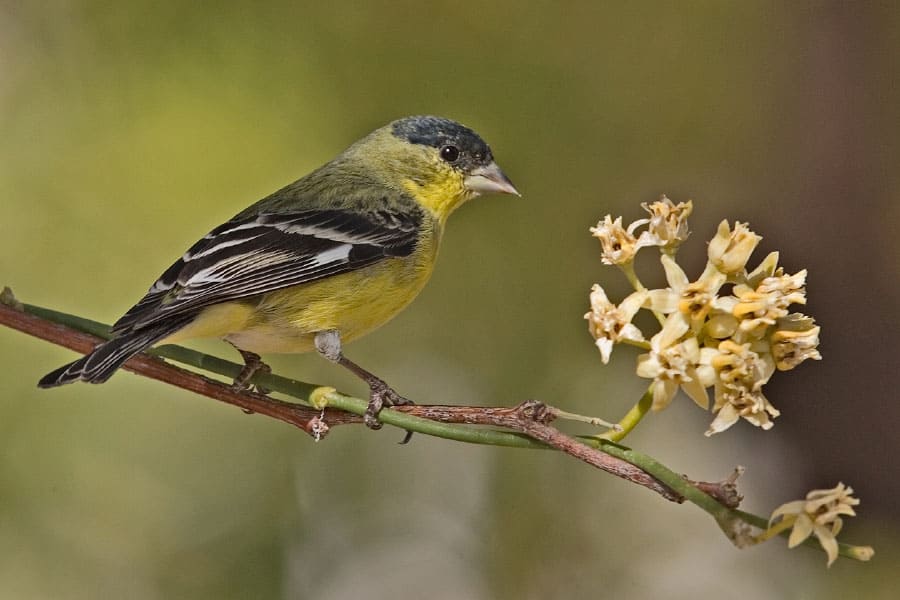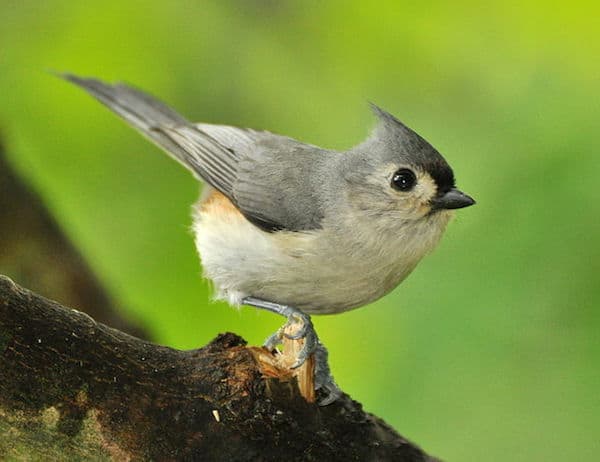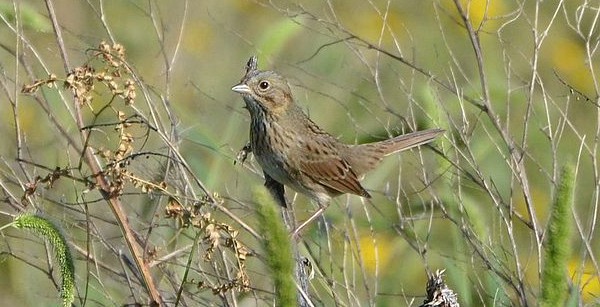Look For
The lesser goldfinch is so named because it is our smallest goldfinch (4 ½ inches long). Adult male is dark olive above with a black cap and yellow below. Breeding-plumaged male American goldfinch has a canary yellow back and white rump. Lesser goldfinch has a dark back and rump. Female is pale olive above and yellow below, very similar to female American goldfinch.
Listen For
The lesser goldfinch’s song is a long rapid series of sweet notes and whistles, often repeated: sweee-cheecheechee-tvee-tvee-tvee-tootootoo-sweee! Often imitates phrases of other birds’ songs.
Find It
Common, but sometimes overlooked, in open brushy habitat, weedy fields, streamsides, parks, and gardens. Usually found in flocks actively foraging for seeds, uttering soft twittering vocalizations. They are widespread in the western United States (California, Arizona, New Mexico, and Colorado), Mexico, and Central America.
Feeding Behavior
The lesser goldfinch forages on the ground in open, brushy habitat like pastures and yards. Feed in small flocks for seeds, flowers, fruits, and sometimes plant lice. Lesser goldfinches must have a reliable source of water because they drink frequently due to their seed diet.
Nesting Behavior
The female selects the nest site with the male accompanying her. Lesser goldfinches may compete with Lawrence’s goldfinches for nest sites. Lesser goldfinches like nesting in a fork of branches in trees and bushes. The leaves from the forked nesting site protect the nest from sunlight as well.
Females collect oak leaves, bark strips, grasses, cocoons, and webs in their bill and feet for their nest. The usual clutch size for lesser goldfinches is four eggs. Females incubate for 12 to 13 days quietly, rarely leaving the nest. After fledging, young remain perched by the nest and fed by parents.
Wow!
The back color of adult male lesser goldfinches varies geographically. Males in the southern Rocky Mountains have black backs, while most others have olive green backs.




